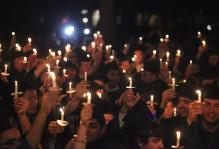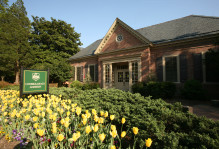Communities are real
We talk often and casually about community, and the meaning of the word seems unproblematic for most of us, most of the time. When the intention is to help promote community, to partner with a community, to improve community health, however, the meaning of the word becomes critically important.
Many might be satisfied that community is like pornography: we know it when we see it. But look more closely (at community!): Is community a place (physical, geographical location), an aggregation of individuals (population), and/or an identity (place-name, such as Williamsburg)? Cetainly, it may be any or all of these, or effectively, not so much. Imagine that, with the best of intentions, you decide to launch a service project in a community called “Paraiso.” You hold a town meeting to discuss prospects with local residents. You announce the meeting by putting flyers in and around the school and the nearby “colmado” (a Dominican version of a “Quick Shop”).
Here are some problems for the likely success of your good intentions:
- Except in the most superficial (place-name) sense, there is no community of Paraiso. The name refers to a general area that includes several barrios (Paraiso del Altos, Veinte Ocho, El Fuerzo, for example), each of which has a neighborhood assocation that bears primary responsibility for organizing neighborhood (community?) improvement projects.
- If the flyers called for a meeting about Paraiso, most likely only residents from “Altos” would attend, both because of the location of the meeting and because the reference is to Paraiso.
- Even if people came from the different barrios, it is likely that only those with the most resources (money, status, access to health care services) would attend. The poorest, those with greatest need, would be unlikely to know about the meeting or to believe that they could have any influence within such a meeting.
All of these, of course, influence directly the prospects for working effectively at the community level to improve health. The SOMOS project is committed to understanding the community in order to partner effectively with the community to improve community health. Our studies, based in systematic ethnographic research, have been revealing. When we began, we assumed that Paraiso was the name of a community that could be our partner. That still may turn out to be true, but for now, the evidence suggests that we will need to work at the barrio level. Note that we are not talking about an area that is a large, complex, diverse, metropolitan region (like Washington, D.C., or Toano). The general area we call Paraiso may be no more than 400 or so houses. The barrio that we have come to know well through this summer’s research is 90 houses.
In what sense, then, are communities real? They are more than place-names, locations, and populations. They are structural arrangements comprising positions, relationships, histories, cultures, and resources. People participate in diverse and variable ways: sharing and/or competing for resources, endorsing and challenging existing arrangements, enacting and changing shared beliefs, traditions, and customs. Communities cannot be reduced to the indivduals that comprise them because they are more than and different from any of the single individuals and the collections of individuals that exist at any moment in time.




No comments.
Comments are currently closed. Comments are closed on all posts older than one year, and for those in our archive.